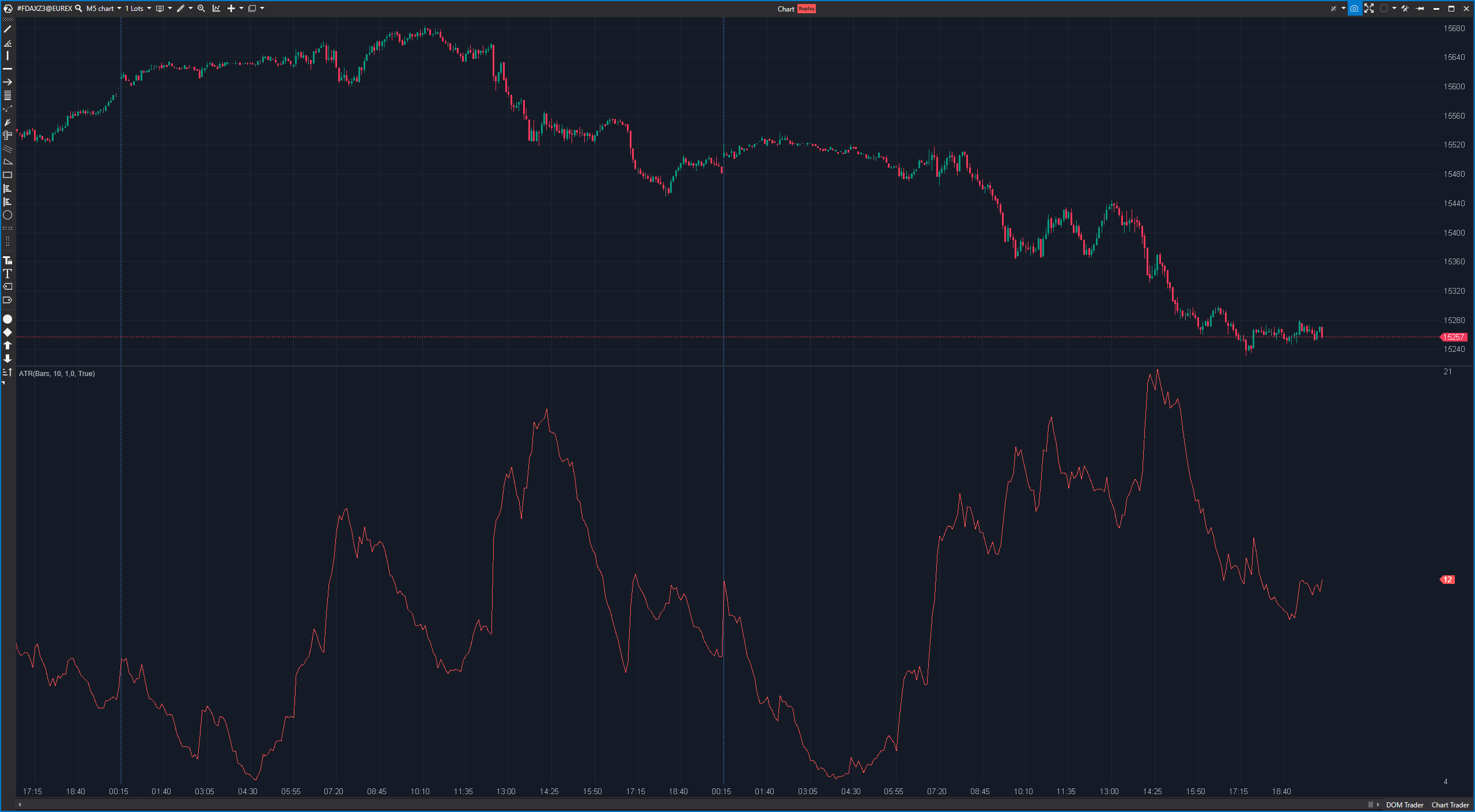The Average True Range (ATR) is a technical indicator used in financial analysis to measure the average volatility of an asset over a certain period of time. The ATR was designed by J. Welles Wilder Jr. and helps traders to understand the volatility of an asset, which can be helpful in determining stop-loss levels, position sizes and trading strategies.
The calculation of the ATR is based on the largest of the following three values:
- The difference between the highest price and the lowest price on the current trading day.
- The difference between the highest price of the current trading day and the closing price of the previous day.
- The difference between the lowest price of the current trading day and the closing price of the previous day.
The ATR is normally calculated as a moving average over a certain period (for example 14 periods) in order to obtain a smoother line.
Advantages of the Average True Range (ATR):
- Measurement of volatility: ATR enables traders to quantify the current volatility of an asset. A higher ATR usually means larger price movements and vice versa.
- Setting stop-loss levels: Traders can use the ATR to set stop-loss levels based on current volatility. A narrower stop loss can be used when volatility is low and a wider stop loss when volatility is high.
- Adjust position sizes: The ATR can also be used to adjust the position sizes. With higher volatility, traders could take smaller positions in order to cope with larger price movements.
Disadvantages of the Average True Range (ATR):
- Lagging indicator: The ATR is based on historical price data and is therefore a lagging indicator. It cannot always react quickly to changing market conditions.
- Simple measurement: Although the ATR measures volatility, it does not provide any information about the direction of the price movement. An increase in the ATR can indicate both a strong upward and a downward movement.
Practical application of the Average True Range (ATR):
An example of the use of ATR is the setting of stop-loss levels based on current volatility:
- If the ATR is high, a trader can set a further stop loss to give room for larger fluctuations and limit the risk.
- If the ATR is low, a tighter stop loss can be set to minimize the risk.
Traders can also use the ATR to adjust their trading strategies. For example, they could reduce their position sizes in more volatile markets or adjust the number of contracts traded.
It is important to note that the ATR should be used in conjunction with other technical indicators and a comprehensive market analysis. It should not be used alone for trading decisions. Risk management and an understanding of current market conditions are also crucial for success in trading.

